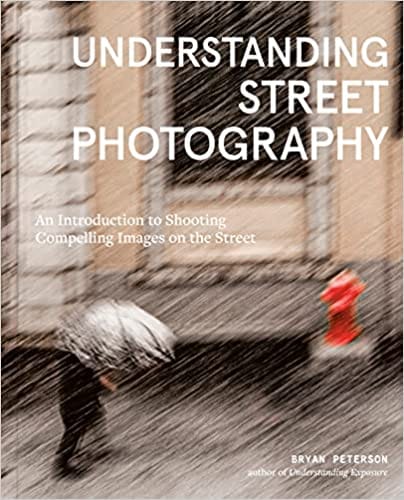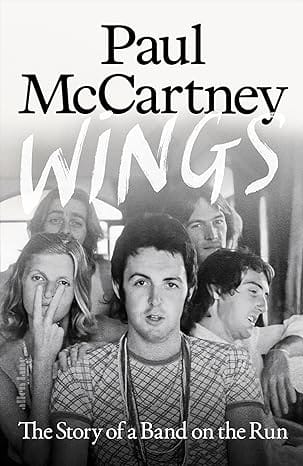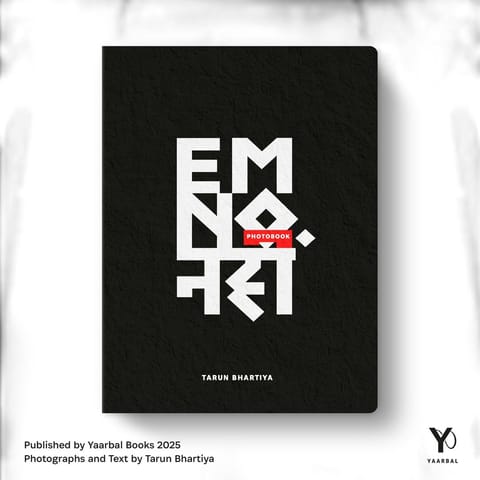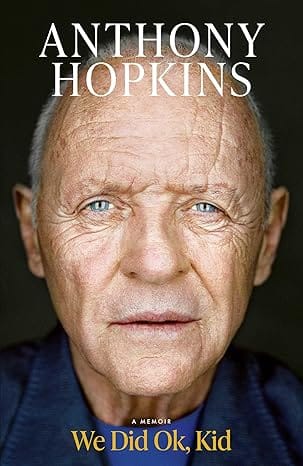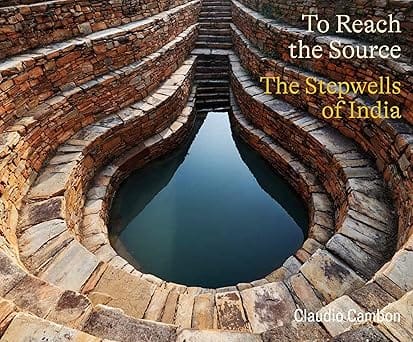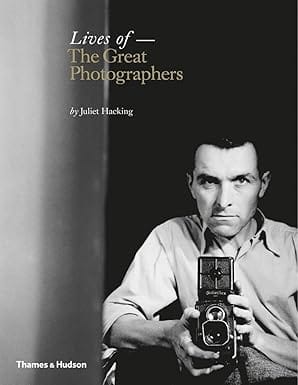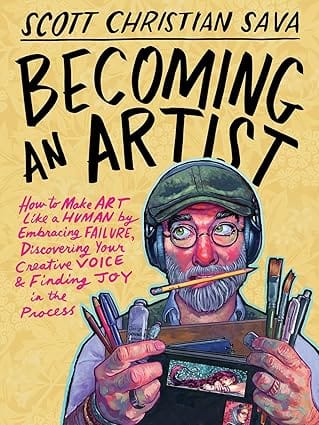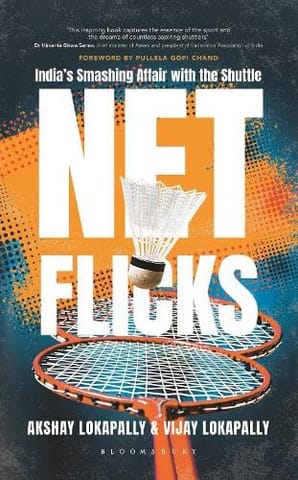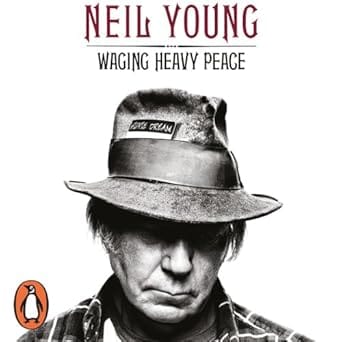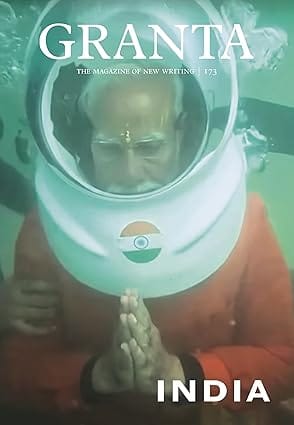WELCOME TO MIDLAND BOOK SHOP!
SHOP FOR
- Non-ficton
- Non-ficton
- Contemporary Fiction
- Contemporary Fiction
- Children
- Children
- Comics & Graphic Novels
- Comics & Graphic Novels
- Non-Fiction
- Non-Fiction
- Fiction
- Fiction
Shop No.20, Aurobindo Palace Market, Hauz Khas, Near Church +91 9818282497 | 011 26867121 110016 New Delhi IN
Midland The Book Shop ™
Shop No.20, Aurobindo Palace Market, Hauz Khas, Near Church +91 9818282497 | 011 26867121 New Delhi, IN
+919871604786 https://www.midlandbookshop.com/s/607fe93d7eafcac1f2c73ea4/69453da445ba84d539b38f9a/black-yellow-simple-bold-youtube-channel-logo-400-x-100-px-1--480x480.png" [email protected]9781984860583 6384b7058dfef1e9af6a23ce Understanding Street Photography An Introduction To Shooting Compelling Images On The Street https://www.midlandbookshop.com/s/607fe93d7eafcac1f2c73ea4/6385ec21e4cb8e5e2aea352d/5175g70bbxl-_sx402_bo1-204-203-200_.jpg 9781984860583
Discover the secrets to mastering street photography—from city streets to country roads and the alleyways in between—from an acclaimed international photographer, teacher, and bestselling author.
Street photography offers treasured moments at almost every turn, if you know where to look. In Understanding Street Photography, readers will learn the techniques for capturing brilliant scenes, including images taken around the globe, from the vibrant streets of Varanasi, India, to the crowded walkways of the Charles Bridge in Prague, and so many other corners of the world.
In this master class, street photography is defined as images that convey evidence of human interaction, whether that’s a striking cityscape, an image of rush-hour foot traffic, the remains of a half-eaten sandwich, or a pedestrian portrait. Along the way, Bryan Peterson shares 120 “mini diaries”: the story behind each image; the thought process; the arrangement of the composition; the psychology of the colors; and the lens, aperture, shutter speed, and ISO for readers to replicate his work.
Professional and aspiring photographers alike will learn how to produce posed and candid compositions, capture light and movement, work with shadows, weather, and architecture, and hone your craft. Through lessons, exercises, and anecdotes, Peterson shares his best tips for capturing the unpredictable world of urban life in motion.
Street photography offers treasured moments at almost every turn, if you know where to look. In Understanding Street Photography, readers will learn the techniques for capturing brilliant scenes, including images taken around the globe, from the vibrant streets of Varanasi, India, to the crowded walkways of the Charles Bridge in Prague, and so many other corners of the world.
In this master class, street photography is defined as images that convey evidence of human interaction, whether that’s a striking cityscape, an image of rush-hour foot traffic, the remains of a half-eaten sandwich, or a pedestrian portrait. Along the way, Bryan Peterson shares 120 “mini diaries”: the story behind each image; the thought process; the arrangement of the composition; the psychology of the colors; and the lens, aperture, shutter speed, and ISO for readers to replicate his work.
Professional and aspiring photographers alike will learn how to produce posed and candid compositions, capture light and movement, work with shadows, weather, and architecture, and hone your craft. Through lessons, exercises, and anecdotes, Peterson shares his best tips for capturing the unpredictable world of urban life in motion.
About the Author
Bryan Peterson is a professional photographer, internationally known instructor, and founder of the Bryan Peterson School of Photography. He is also the bestselling author of Understanding Exposure, Learning to See Creatively, Understanding Shutter Speed, Understanding Close-Up Photography, Understanding Digital Photography, Beyond Portraiture, and, most recently, Bryan Peterson’s Photography School. His trademark use of color and strong, graphic composition have garnered him many photographic awards, including the New York Art Director’s Gold Award and honors from Communication Arts and Print magazines.
Excerpt. © Reprinted by permission. All rights reserved.
Introduction
Street photography has become a very popular subject in today’s photographic community, whether shot with a DSLR or a smartphone. On Instagram, street photography is the second most searched photography category after travel photography. And it could easily be argued that much of the travel photography being done in recent years is in fact just street photography shot by tourists. Today, everyone is a photographer, and whether you are shooting in your own hometown or halfway around the world, you are, at least in my mind, a street photographer!
What is street photography? I define it as photography done in the streets, avenues, lanes, and urban environments of cities of all sizes and shapes. It is observations of life on the street: people, abstracts, still lifes, motion-filled subjects, color. Most street photography compositions include people, whether posed or candid, someone the photographer met or saw passing by, or figures that appear small and distant in the overall composition. Architecture is another common thread in street photography, featuring lines, patterns, and the dramatic play of light and shadow. Street photography can also be abstract: a crushed bottle cap lying in a crosswalk, or the car scrapes left behind on the concrete walls that line the narrow entrances of public parking garages. While people are certainly not a requirement in street photography, most compositions do convey the evidence of human interaction, such as a half-eaten sandwich sitting on a restaurant counter in low-angled sidelight against a backdrop of blurred yellow cabs seen through the restaurant’s window.
I am often asked what kind of photographer I am: nature, industrial, abstract? Fashion, nude, or fine art? Corporate or advertising? Truthfully, I have been all of those at one time or another, but at a recent photo conference where I presented, I was told (not asked) at least a dozen times that I am a street photographer. And it’s true that I have been a street photographer off and on for twenty-five years, traveling to cities worldwide and accumulating more than three million frequent flyer miles along the way.
One thing I have learned about street photography, especially in these past five years of shooting in cities all over the world, is that much of its photographic gold remains hidden from a lot of photographers. I have met many amateur photographers over the years, most of whom live near or in cities large and small. They usually tell me how much they love shooting nature, and that they dash off to the countryside, beach, or mountains whenever they have free time to shoot. When I ask why they don’t just shoot in the city where they live, or in other cities that are not familiar to them, I’m almost always met with something like, “Other than a possible city skyline during the ‘blue hour,’ what else is there to shoot?”
Throughout the pages of this book, you will find ample proof that cities of all sizes are treasure troves of photographic gold. A walk or slow drive down any street, lane, alley, or dirt road will reveal a visual feast, from people and architecture to abstract subjects that, once discovered, will broaden your creative vision. It is in the cities that skyscrapers sit next to buildings of much smaller height, and the hustle and bustle of organized chaos offers up a constantly changing buffet of photographic potential. No other genre offers as many opportunities to capture what Henri CartierBresson called the decisive moment.
In this book you’ll find more than one hundred mini tutorials for street photography, each sharing the story behind an image, covering a vast array of subject matter that is certain to appeal to every reader (even nature photographers!). In each mini diary (as I like to call them) I describe my thought process and why this scene caught my attention, along with considerations such as the arrangement of the composition, the psychology of the colors, and the visual weight of the image. Each tutorial concludes with the camera, lens, aperture, shutter speed, ISO, and white balance (WB) used.
Whether you have just picked up an interest in street photography or you have been on the street for several years, this book will help you gain a better understanding of both exposure and composition. You might also find it beneficial to refer to my previous books, such as Understanding Exposure, Understanding Shutter Speed, Learning to See Creatively, and Understanding Composition, for more in-depth explanations. Understanding Exposure, now in its fourth edition, would be a useful companion to these mini tutorials, as it helps readers understand the difference between a correct exposure and a creatively correct exposure, offering in-depth explanations of, for example, a “Who cares?” aperture versus a “storytelling” aperture. If you are a smartphone user, you are probably familiar with the creative exposure limitations of your smartphone; this book will serve to expand your vision and point of view and help you create far more compelling compositions.
Street photography requires a keen awareness of your surroundings and how people, vehicles, and bicycles interact with light, shadow, architecture, and signage— providing endless opportunities to play with photographic potential and the creative use of shutter speeds, whether through implying motion, freezing action, or the simple act of panning. It allows you to capture the human condition in all of its good, bad, joy-filled, sad, tragic, celebratory beauty. Once you’ve absorbed the mini tutorials in this book, I believe your senses will be awakened to all of the amazing possibilities for image-making on streets the world over.
Street photography has become a very popular subject in today’s photographic community, whether shot with a DSLR or a smartphone. On Instagram, street photography is the second most searched photography category after travel photography. And it could easily be argued that much of the travel photography being done in recent years is in fact just street photography shot by tourists. Today, everyone is a photographer, and whether you are shooting in your own hometown or halfway around the world, you are, at least in my mind, a street photographer!
What is street photography? I define it as photography done in the streets, avenues, lanes, and urban environments of cities of all sizes and shapes. It is observations of life on the street: people, abstracts, still lifes, motion-filled subjects, color. Most street photography compositions include people, whether posed or candid, someone the photographer met or saw passing by, or figures that appear small and distant in the overall composition. Architecture is another common thread in street photography, featuring lines, patterns, and the dramatic play of light and shadow. Street photography can also be abstract: a crushed bottle cap lying in a crosswalk, or the car scrapes left behind on the concrete walls that line the narrow entrances of public parking garages. While people are certainly not a requirement in street photography, most compositions do convey the evidence of human interaction, such as a half-eaten sandwich sitting on a restaurant counter in low-angled sidelight against a backdrop of blurred yellow cabs seen through the restaurant’s window.
I am often asked what kind of photographer I am: nature, industrial, abstract? Fashion, nude, or fine art? Corporate or advertising? Truthfully, I have been all of those at one time or another, but at a recent photo conference where I presented, I was told (not asked) at least a dozen times that I am a street photographer. And it’s true that I have been a street photographer off and on for twenty-five years, traveling to cities worldwide and accumulating more than three million frequent flyer miles along the way.
One thing I have learned about street photography, especially in these past five years of shooting in cities all over the world, is that much of its photographic gold remains hidden from a lot of photographers. I have met many amateur photographers over the years, most of whom live near or in cities large and small. They usually tell me how much they love shooting nature, and that they dash off to the countryside, beach, or mountains whenever they have free time to shoot. When I ask why they don’t just shoot in the city where they live, or in other cities that are not familiar to them, I’m almost always met with something like, “Other than a possible city skyline during the ‘blue hour,’ what else is there to shoot?”
Throughout the pages of this book, you will find ample proof that cities of all sizes are treasure troves of photographic gold. A walk or slow drive down any street, lane, alley, or dirt road will reveal a visual feast, from people and architecture to abstract subjects that, once discovered, will broaden your creative vision. It is in the cities that skyscrapers sit next to buildings of much smaller height, and the hustle and bustle of organized chaos offers up a constantly changing buffet of photographic potential. No other genre offers as many opportunities to capture what Henri CartierBresson called the decisive moment.
In this book you’ll find more than one hundred mini tutorials for street photography, each sharing the story behind an image, covering a vast array of subject matter that is certain to appeal to every reader (even nature photographers!). In each mini diary (as I like to call them) I describe my thought process and why this scene caught my attention, along with considerations such as the arrangement of the composition, the psychology of the colors, and the visual weight of the image. Each tutorial concludes with the camera, lens, aperture, shutter speed, ISO, and white balance (WB) used.
Whether you have just picked up an interest in street photography or you have been on the street for several years, this book will help you gain a better understanding of both exposure and composition. You might also find it beneficial to refer to my previous books, such as Understanding Exposure, Understanding Shutter Speed, Learning to See Creatively, and Understanding Composition, for more in-depth explanations. Understanding Exposure, now in its fourth edition, would be a useful companion to these mini tutorials, as it helps readers understand the difference between a correct exposure and a creatively correct exposure, offering in-depth explanations of, for example, a “Who cares?” aperture versus a “storytelling” aperture. If you are a smartphone user, you are probably familiar with the creative exposure limitations of your smartphone; this book will serve to expand your vision and point of view and help you create far more compelling compositions.
Street photography requires a keen awareness of your surroundings and how people, vehicles, and bicycles interact with light, shadow, architecture, and signage— providing endless opportunities to play with photographic potential and the creative use of shutter speeds, whether through implying motion, freezing action, or the simple act of panning. It allows you to capture the human condition in all of its good, bad, joy-filled, sad, tragic, celebratory beauty. Once you’ve absorbed the mini tutorials in this book, I believe your senses will be awakened to all of the amazing possibilities for image-making on streets the world over.
out of stock INR 719
1 1
Email ID already exists!
Your Current password is incorrect
Password Updated Successfully
Thanks for your Feedback
- Home
- Cinema & Photography
- Understanding Street Photography An Introduction To Shooting Compelling Images On The Street
Understanding Street Photography An Introduction To Shooting Compelling Images On The Street
ISBN: 9781984860583
₹719
₹899 (20% OFF)SIZE GUIDE
Back In Stock Shortly - Fill The Book Request Form
Sold By: Hauz Khas - Aurobindo Market
Details
- ISBN: 9781984860583
- Author: Bryan Peterson
- Publisher: Watson Guptill
- Pages: 192
- Format: Paperback
Book Description
Discover the secrets to mastering street photography—from city streets to country roads and the alleyways in between—from an acclaimed international photographer, teacher, and bestselling author.
Street photography offers treasured moments at almost every turn, if you know where to look. In Understanding Street Photography, readers will learn the techniques for capturing brilliant scenes, including images taken around the globe, from the vibrant streets of Varanasi, India, to the crowded walkways of the Charles Bridge in Prague, and so many other corners of the world.
In this master class, street photography is defined as images that convey evidence of human interaction, whether that’s a striking cityscape, an image of rush-hour foot traffic, the remains of a half-eaten sandwich, or a pedestrian portrait. Along the way, Bryan Peterson shares 120 “mini diaries”: the story behind each image; the thought process; the arrangement of the composition; the psychology of the colors; and the lens, aperture, shutter speed, and ISO for readers to replicate his work.
Professional and aspiring photographers alike will learn how to produce posed and candid compositions, capture light and movement, work with shadows, weather, and architecture, and hone your craft. Through lessons, exercises, and anecdotes, Peterson shares his best tips for capturing the unpredictable world of urban life in motion.
Street photography offers treasured moments at almost every turn, if you know where to look. In Understanding Street Photography, readers will learn the techniques for capturing brilliant scenes, including images taken around the globe, from the vibrant streets of Varanasi, India, to the crowded walkways of the Charles Bridge in Prague, and so many other corners of the world.
In this master class, street photography is defined as images that convey evidence of human interaction, whether that’s a striking cityscape, an image of rush-hour foot traffic, the remains of a half-eaten sandwich, or a pedestrian portrait. Along the way, Bryan Peterson shares 120 “mini diaries”: the story behind each image; the thought process; the arrangement of the composition; the psychology of the colors; and the lens, aperture, shutter speed, and ISO for readers to replicate his work.
Professional and aspiring photographers alike will learn how to produce posed and candid compositions, capture light and movement, work with shadows, weather, and architecture, and hone your craft. Through lessons, exercises, and anecdotes, Peterson shares his best tips for capturing the unpredictable world of urban life in motion.
About the Author
Bryan Peterson is a professional photographer, internationally known instructor, and founder of the Bryan Peterson School of Photography. He is also the bestselling author of Understanding Exposure, Learning to See Creatively, Understanding Shutter Speed, Understanding Close-Up Photography, Understanding Digital Photography, Beyond Portraiture, and, most recently, Bryan Peterson’s Photography School. His trademark use of color and strong, graphic composition have garnered him many photographic awards, including the New York Art Director’s Gold Award and honors from Communication Arts and Print magazines.
Excerpt. © Reprinted by permission. All rights reserved.
Introduction
Street photography has become a very popular subject in today’s photographic community, whether shot with a DSLR or a smartphone. On Instagram, street photography is the second most searched photography category after travel photography. And it could easily be argued that much of the travel photography being done in recent years is in fact just street photography shot by tourists. Today, everyone is a photographer, and whether you are shooting in your own hometown or halfway around the world, you are, at least in my mind, a street photographer!
What is street photography? I define it as photography done in the streets, avenues, lanes, and urban environments of cities of all sizes and shapes. It is observations of life on the street: people, abstracts, still lifes, motion-filled subjects, color. Most street photography compositions include people, whether posed or candid, someone the photographer met or saw passing by, or figures that appear small and distant in the overall composition. Architecture is another common thread in street photography, featuring lines, patterns, and the dramatic play of light and shadow. Street photography can also be abstract: a crushed bottle cap lying in a crosswalk, or the car scrapes left behind on the concrete walls that line the narrow entrances of public parking garages. While people are certainly not a requirement in street photography, most compositions do convey the evidence of human interaction, such as a half-eaten sandwich sitting on a restaurant counter in low-angled sidelight against a backdrop of blurred yellow cabs seen through the restaurant’s window.
I am often asked what kind of photographer I am: nature, industrial, abstract? Fashion, nude, or fine art? Corporate or advertising? Truthfully, I have been all of those at one time or another, but at a recent photo conference where I presented, I was told (not asked) at least a dozen times that I am a street photographer. And it’s true that I have been a street photographer off and on for twenty-five years, traveling to cities worldwide and accumulating more than three million frequent flyer miles along the way.
One thing I have learned about street photography, especially in these past five years of shooting in cities all over the world, is that much of its photographic gold remains hidden from a lot of photographers. I have met many amateur photographers over the years, most of whom live near or in cities large and small. They usually tell me how much they love shooting nature, and that they dash off to the countryside, beach, or mountains whenever they have free time to shoot. When I ask why they don’t just shoot in the city where they live, or in other cities that are not familiar to them, I’m almost always met with something like, “Other than a possible city skyline during the ‘blue hour,’ what else is there to shoot?”
Throughout the pages of this book, you will find ample proof that cities of all sizes are treasure troves of photographic gold. A walk or slow drive down any street, lane, alley, or dirt road will reveal a visual feast, from people and architecture to abstract subjects that, once discovered, will broaden your creative vision. It is in the cities that skyscrapers sit next to buildings of much smaller height, and the hustle and bustle of organized chaos offers up a constantly changing buffet of photographic potential. No other genre offers as many opportunities to capture what Henri CartierBresson called the decisive moment.
In this book you’ll find more than one hundred mini tutorials for street photography, each sharing the story behind an image, covering a vast array of subject matter that is certain to appeal to every reader (even nature photographers!). In each mini diary (as I like to call them) I describe my thought process and why this scene caught my attention, along with considerations such as the arrangement of the composition, the psychology of the colors, and the visual weight of the image. Each tutorial concludes with the camera, lens, aperture, shutter speed, ISO, and white balance (WB) used.
Whether you have just picked up an interest in street photography or you have been on the street for several years, this book will help you gain a better understanding of both exposure and composition. You might also find it beneficial to refer to my previous books, such as Understanding Exposure, Understanding Shutter Speed, Learning to See Creatively, and Understanding Composition, for more in-depth explanations. Understanding Exposure, now in its fourth edition, would be a useful companion to these mini tutorials, as it helps readers understand the difference between a correct exposure and a creatively correct exposure, offering in-depth explanations of, for example, a “Who cares?” aperture versus a “storytelling” aperture. If you are a smartphone user, you are probably familiar with the creative exposure limitations of your smartphone; this book will serve to expand your vision and point of view and help you create far more compelling compositions.
Street photography requires a keen awareness of your surroundings and how people, vehicles, and bicycles interact with light, shadow, architecture, and signage— providing endless opportunities to play with photographic potential and the creative use of shutter speeds, whether through implying motion, freezing action, or the simple act of panning. It allows you to capture the human condition in all of its good, bad, joy-filled, sad, tragic, celebratory beauty. Once you’ve absorbed the mini tutorials in this book, I believe your senses will be awakened to all of the amazing possibilities for image-making on streets the world over.
Street photography has become a very popular subject in today’s photographic community, whether shot with a DSLR or a smartphone. On Instagram, street photography is the second most searched photography category after travel photography. And it could easily be argued that much of the travel photography being done in recent years is in fact just street photography shot by tourists. Today, everyone is a photographer, and whether you are shooting in your own hometown or halfway around the world, you are, at least in my mind, a street photographer!
What is street photography? I define it as photography done in the streets, avenues, lanes, and urban environments of cities of all sizes and shapes. It is observations of life on the street: people, abstracts, still lifes, motion-filled subjects, color. Most street photography compositions include people, whether posed or candid, someone the photographer met or saw passing by, or figures that appear small and distant in the overall composition. Architecture is another common thread in street photography, featuring lines, patterns, and the dramatic play of light and shadow. Street photography can also be abstract: a crushed bottle cap lying in a crosswalk, or the car scrapes left behind on the concrete walls that line the narrow entrances of public parking garages. While people are certainly not a requirement in street photography, most compositions do convey the evidence of human interaction, such as a half-eaten sandwich sitting on a restaurant counter in low-angled sidelight against a backdrop of blurred yellow cabs seen through the restaurant’s window.
I am often asked what kind of photographer I am: nature, industrial, abstract? Fashion, nude, or fine art? Corporate or advertising? Truthfully, I have been all of those at one time or another, but at a recent photo conference where I presented, I was told (not asked) at least a dozen times that I am a street photographer. And it’s true that I have been a street photographer off and on for twenty-five years, traveling to cities worldwide and accumulating more than three million frequent flyer miles along the way.
One thing I have learned about street photography, especially in these past five years of shooting in cities all over the world, is that much of its photographic gold remains hidden from a lot of photographers. I have met many amateur photographers over the years, most of whom live near or in cities large and small. They usually tell me how much they love shooting nature, and that they dash off to the countryside, beach, or mountains whenever they have free time to shoot. When I ask why they don’t just shoot in the city where they live, or in other cities that are not familiar to them, I’m almost always met with something like, “Other than a possible city skyline during the ‘blue hour,’ what else is there to shoot?”
Throughout the pages of this book, you will find ample proof that cities of all sizes are treasure troves of photographic gold. A walk or slow drive down any street, lane, alley, or dirt road will reveal a visual feast, from people and architecture to abstract subjects that, once discovered, will broaden your creative vision. It is in the cities that skyscrapers sit next to buildings of much smaller height, and the hustle and bustle of organized chaos offers up a constantly changing buffet of photographic potential. No other genre offers as many opportunities to capture what Henri CartierBresson called the decisive moment.
In this book you’ll find more than one hundred mini tutorials for street photography, each sharing the story behind an image, covering a vast array of subject matter that is certain to appeal to every reader (even nature photographers!). In each mini diary (as I like to call them) I describe my thought process and why this scene caught my attention, along with considerations such as the arrangement of the composition, the psychology of the colors, and the visual weight of the image. Each tutorial concludes with the camera, lens, aperture, shutter speed, ISO, and white balance (WB) used.
Whether you have just picked up an interest in street photography or you have been on the street for several years, this book will help you gain a better understanding of both exposure and composition. You might also find it beneficial to refer to my previous books, such as Understanding Exposure, Understanding Shutter Speed, Learning to See Creatively, and Understanding Composition, for more in-depth explanations. Understanding Exposure, now in its fourth edition, would be a useful companion to these mini tutorials, as it helps readers understand the difference between a correct exposure and a creatively correct exposure, offering in-depth explanations of, for example, a “Who cares?” aperture versus a “storytelling” aperture. If you are a smartphone user, you are probably familiar with the creative exposure limitations of your smartphone; this book will serve to expand your vision and point of view and help you create far more compelling compositions.
Street photography requires a keen awareness of your surroundings and how people, vehicles, and bicycles interact with light, shadow, architecture, and signage— providing endless opportunities to play with photographic potential and the creative use of shutter speeds, whether through implying motion, freezing action, or the simple act of panning. It allows you to capture the human condition in all of its good, bad, joy-filled, sad, tragic, celebratory beauty. Once you’ve absorbed the mini tutorials in this book, I believe your senses will be awakened to all of the amazing possibilities for image-making on streets the world over.
User reviews
NEWSLETTER
Subscribe to get Email Updates!
Thanks for subscribing.
Your response has been recorded.

India's Iconic & Independent Book Store offering a vast selection of books across a variety of genres Since 1978.
"We Believe In The Power of Books" Our mission is to make books accessible to everyone, and to cultivate a culture of reading and learning. We strive to provide a wide range of books, from classic literature, sci-fi and fantasy, to graphic novels, biographies and self-help books, so that everyone can find something to read.
Whether you’re looking for your next great read, a gift for someone special, or just browsing, Midland is here to make your book-buying experience easy and enjoyable.
We are shipping pan India and across the world.
For Bulk Order / Corporate Gifting
 +91 9818282497 |
+91 9818282497 |  [email protected]
[email protected]
Click To Know More
QUICK LINKS
ADDRESS
Midland Book Shop - Hauz Khas
Shop No.20, Aurobindo Palace Market, Near Church, New Delhi
Shop No.20, Aurobindo Palace Market, Near Church, New Delhi

